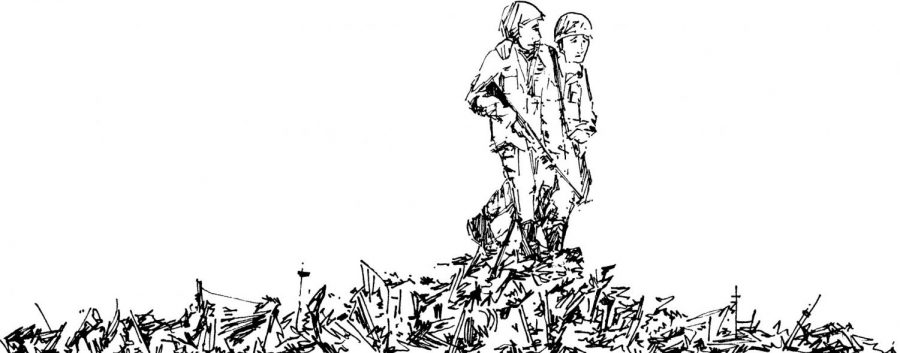Pun intended, director Andrew Currie’s film “Fido” is a “fresh take” on the zombie genre. Though obviously taking a cue from the hit zombie-parody film “Shawn of the Dead”, “Fido”, instead of spoofing the genre, provides instead a homage to as well as a satire of the idyllic 1950’s American lifestyle.
Set in an alternative 1950s universe, a radioactive space cloud has relatively recently reanimated the dead, turning them in to flesh-loving and stumbling zombies. Humankind has fought and won the Zombie War, and a government corporation known as Zomcon has installed electronic collars on captured zombies, depriving them of their aggressive habits. These “pet” zombies, now used by the rich and corporate world as servants, perform menial tasks such as delivering newspapers and milk, delivering groceries and holding up umbrellas.
“Fido” tells the story of a typical suburban boy, Timmy Robinson, who befriends the family’s new servant: a zombie he aptly names Fido after his dog-like habits and loyalty. With a distant, zombie-phobic and funeral-obsessed father, a pregnant and rather modern mother, a variety of neighbors and a neighborhood overloaded with suburban stereotypes, hilarity and social conflict ensues. Even Timmy’s “keeping up with the Joneses” mother, played by the delightful Carrie-Anne Moss, pressures Timmy’s father into keeping the rotting pet.
“Fido” also mocks the supposed nuclear family and safe education system of the Golden Era. Timmy’s high-strung father, who avoids typical bonding activities such as tossing a baseball or having a conversation with with Timmy, gives his son a gun and the advice that “getting too close, these ’emotions’, are not what ‘it’s’ about. It’s about survival.” And at school, children learn how to shoot rifles during recess to protect themselves against zombies, but within in the classroom discussions about the nature of life and death (and where a zombie lies in the spectrum) is scoffed at and shuffled uncomfortably out of the way by Timmy’s perky teacher.
While the blood-soaked slapstick comedy is a definite plus, the movie also includes subtle nuances that are much more thoughtful than it initially appears. With bright pastel homes and Technicolor flowers, the graying flesh and disintegrating lumbering of the various zombie pets stands out even more as ZomCon attempts to integrate and train them to be working “members” of society.
This zany world also introduces a bizarre hilarity in various unexpected situations. The loyal Fido, after his collar is removed, mauls the old lady who torments Timmy, the bullies who set Timmy up and, later, Timmy’s father’s murderer like a horrific pit bull. Timmy and his mother, both enamored with their pet (and Fido with them) attempt to correct these situations through a variety of means: Timmy apologetically kills the old lady with a shovel once she comes back from the dead; Timmy’s mother burns down a shed with the bodies of the reanimated bullies in them, holding Timmy by her side as they watch the flames dance a la a Hallmark Christmas photograph.
“Fido” is unique within zombie culture, offering both a delightful satire of the “Leave It to Beaver” generation and a delicate homage to George A. Romero’s “Night of the Living Dead”: the town in”Fido” is called Willard, a definite nod at the legendary film’s location. This Canadian independent film offers a decent amount of gore and unexpectedly playful violence, lots of laughs and the most endearing zombie friend-fiend you will ever meet in film.







